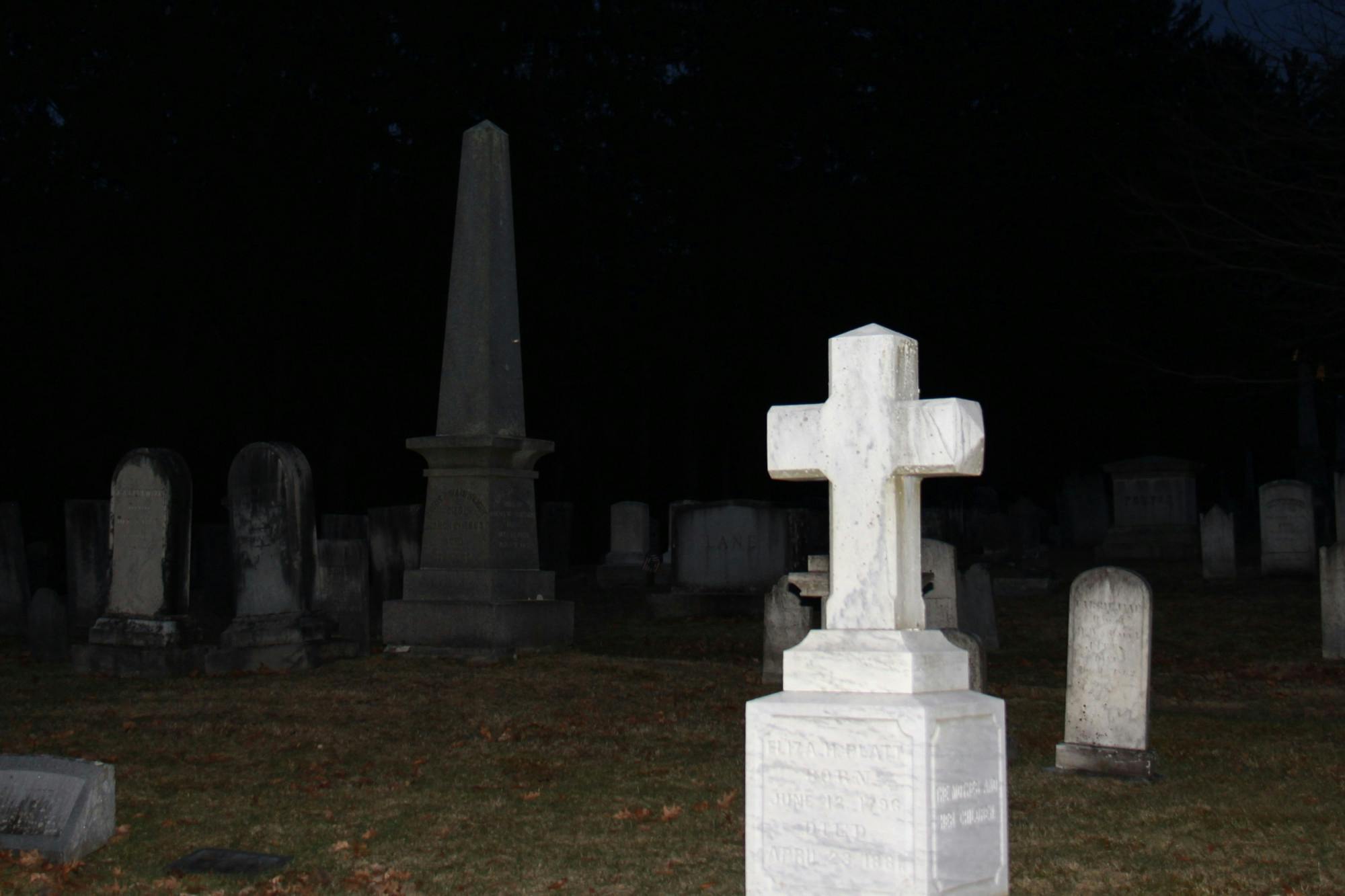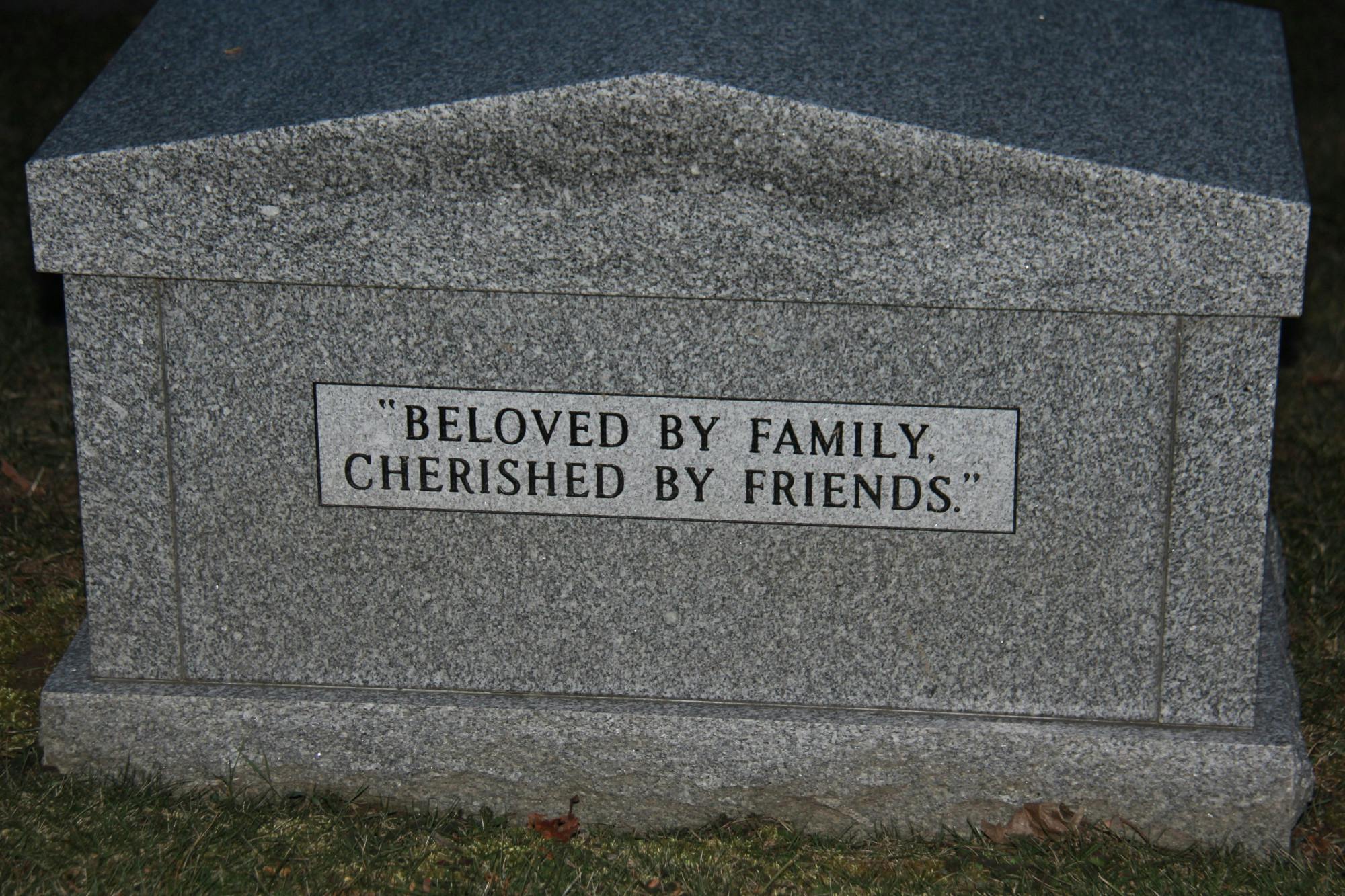While some may view the Middlebury West Cemetery as just a spooky shortcut to the Fitness Center, or a smoke-stop before a night at the social houses, others treasure the grounds as a trove of local and national history. This corner of campus represents an obscure enterprise of Middlebury College and contains a multitude of buried stories that whisper quietly to those who listen.
Jim Ralph, dean of the faculty and Rehnquist professor of American History and Culture, is no stranger to the intricacies of the West Cemetery.
“I knew, of course, that history had left its mark everywhere, but over time I became more and more drawn to the lived experiences of people on a local level. And the West Cemetery emerged to me as an open air museum of early Middlebury ready to be explored and full of fascinating stories,” Ralph wrote in an email to The Campus, describing what drew him to this underrated area of Middlebury.
“Jim does guided tours of the cemetery at least twice a year, taking students, alums, trustees around and giving them information about people buried there,” wrote Linda Williams, principal manager and treasurer of the West Cemetery, in an email to The Campus describing the role of Professor Ralph’s expertise in running the grounds. She described her involvement with the West Cemetery in recent years, noting a change in the importance it received in the local community during the Covid-19 pandemic.
“Cemeteries are a reality and an everyday part of village life. Being the treasurer (bookkeeper) is an old-fashioned job, definitely part time or as needed only. During the pandemic when people were more aware of their mortality than usual, we were selling up to 15 grave sites per year, whereas normally we might sell 2 or 3 per year,” Williams wrote.

Take, for example, William Hazlett Upson (1891–1975), a prolific author of the fictional series starring Alexander Botts, a salesman for the Earthworm Tractor Company. Upson transcended his self-described “ergophobic,” or work-hating, disposition to write years of stories for The Saturday Evening Post. His series on the traveling tractor salesman was eventually adapted into a 1936 Hollywood film, “Earthworm Tractors.” Upson was also an advocate, founding the Middlebury Maternal Health Council and was a politician of sorts, representing Vermont as a delegate at the 1956 Republican National Convention. This produced presidential nominee Dwight D. Eisenhower and vice-presidential nominee Richard Nixon.
Upson’s burial is relatively recent history compared to some other prominent figures such as William Slade, the 17th governor of Vermont and U.S. Whig Congressman. Slade lived for 63 years in the beginning of the 19th century, playing a role in critical moments in American history.
Author and historian of the Underground Railroad and Civil War Michelle Sherburne includes a vivid section on Slade in her book, “Abolition and the Underground Railroad in Vermont.” Here, Sherburne recounted how the newspaper of preeminent abolitionist and journalist William Lloyd Garrison, The Liberator, called Slade “the first champion of immediatism in Congress.” My slumbering AP United States History knowledge was refreshed when I learned that Slade vehemently opposed the gag rule, a series of resolutions passed in the 1830s and 1840s that prohibited the discussion of slavery.
Ralph remarked on Slade with special importance to the cemetery and local history overall.
“To me, [he is] the most interesting figure buried in the cemetery. I have always said that I want to learn more about him, especially because of his strong anti-slavery stance, and the Sheldon Museum holds his papers. What’s more, his memorial marker is simply fascinating,” Ralph wrote.
On the right side of the cemetery, if you are walking towards the Fitness Center, a taller obelisk grave marker will come into view. An engraving on the marker separates this plot from the rest.
“In memory of Eliza Dodson, colored, born in the City of Washington, Died April 19, 1853, Aged 18…”

Sherburne explained that Dodson’s mother likely gave her daughter to Slade in Washington D.C., where Slade was working as a senator, hoping to see her to freedom when Slade's family returned to Vermont. The decision to include Dodson’s title on Slade’s grave marker was radical at the time of his death in 1853 yet was characteristic of his lifelong commitment to abolition.
The two figures mentioned represent only a minor slice of the spiritual and historical library the West Cemetery represents. Regardless of what religious beliefs one might hold, the burial of dozens of unique, mortal lives right beneath our campus grounds presents us with an immediate opportunity to enrich our understanding of history, and for me, remind me of the historical moment I find my ephemeral flesh box lugging me around in.
Seemingly, this point of view poses a risk of existential crisis every time I stroll past the grounds. Linda Williams’ practical view grounds my philosophical dilly-dallying, incorporating a necessary practicality in perceiving the West Cemetery.
“There's no mystery about cemeteries. Everyone will need to think about death at some point and make plans accordingly. To paraphrase Benjamin Franklin, "death and taxes are inevitable," Williams wrote.

June Su '27 (he/him) is the Senior Multimedia Editor.
June is a political science major and studio art minor, also studying history and Spanish. He spent the summer of 2025 working as a political science research assistant examining investments in the Congo River Basin to achieve international biodiversity and carbon goals.






